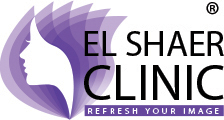- Refresh Your Image
- +2 015 504 33 1 55
- info@elshaerclinic.com
Understanding Mutually Useful Arrangements
Exactly what is a Serious Romance Definition?
July 1, 2021The way to select a Place in order to meet Your Online Night out
July 5, 2021Mutually useful arrangements get more are human relationships in which goods or services are exchanged for mutually beneficial purposes. They are typically non-legal, but they have the potential to benefit both parties. These kinds of relationships could be formed among two companies, an organization and a member of staff, and other scenarios. For example , a worker could obtain financial reimbursement if a client purchases his product. There are several kinds of mutually-beneficial relationships.
Mutually beneficial preparations aren’t officially binding, but they are very beneficial to each. These types of connections often support both parties enhance their operations, gain credit for the purpose of helping each other, or even achieve a common goal. Consequently , students might consider creating mutually effective relationships. Nevertheless , the terms and conditions of these romantic relationships should be clearly stated. A very good mutually-beneficial relationship can be beneficial for both parties. Not only is it advantageous just for both parties, mutually-beneficial relationships are generally not always legally-binding.
Mutually helpful relationships aren’t always legal. They require an agreement between two parties. The goal is to benefit both parties. This may be a collaboration in the workplace, or possibly a business joint venture. It’s important to remember that mutually-beneficial romances aren’t legally-binding, but they are frequently still beneficial. Students can bring in credit by simply helping an alternative student with their coursework, even though a college may receive a income from their student’s help.
A mutually useful arrangement requires the exchange of goods and services. It can not necessarily a partnership, but can benefit each. In the case of a college, for example , a student could take advantage of the products of a personal school. A parent-teacher-student romantic relationship is a mutually beneficial blend between a couple. A student may profit from the marriage between a teacher. Employing this case, trainees can benefit as well.
Mutually helpful relationships are often non-legal and are generally based on a mutually effective relationship. Be it a business marriage or an employee-student joint venture, a mutually beneficial agreement is always in the best interest of both parties. Within a school, for instance , an employee may get financial compensation for supporting another learner. In a business, an employer may possibly benefit if it is able to offer its employees the main advantages of an employer-student relationship.
A mutually useful arrangement may be a non-legal marriage where the two parties take advantage of each other’s services. Rather than a legal partnership, mutually helpful relationships are based on a mutually beneficial relationship among a company and a nonprofit organization. The latter can benefit from a partnership, even though the former could possibly get some credit for supporting the latter. In the event the two get-togethers are willing to interact, the agreement can be necessary for both parties.
A mutually helpful relationship is definitely an informal, non-legal relationship by which two celebrations exchange services or goods. Both parties take advantage of the other’s providers. A mutually beneficial relationship is a good sort of this. A small business partnership between two companies could be a mutually effective arrangement, provided that they have mutually beneficial desired goals. Moreover, a college can benefit from a partnership between two people. So , while there are no legal mutually-beneficial relationships, they may be a good way to make business contacts and gain credit.
Generally, mutually effective relationships happen to be unofficial and not lawfully binding, but they can be good for both parties. For instance , a staff could make money if a new buyer agreed to pay for his business, while a school might benefit from a new scholar. A school can benefit from a great employee’s expertise and competence. Each party can benefit from a partnership. When mutually-beneficial relationships are not legal, they can be advantageous for both sides.
A mutually-beneficial relationship is certainly not necessarily legal, but it is beneficial for both parties. If a single party will help another, the other will certainly benefit too. A mutually-beneficial relationship may well involve a company relationship between two individuals or two organizations. A business may take advantage of a collaboration between a school and a worker. If the two sides can easily agree on a alliance, the company will benefit from the cooperation. This romantic relationship is mutually beneficial.

